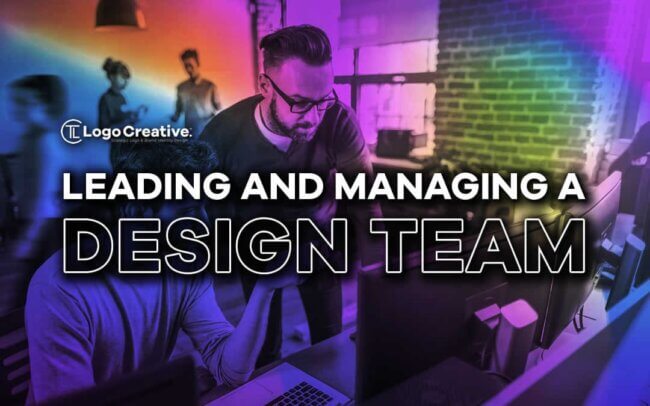Designers are often highly creative and engaging individuals, which makes the leadership of a design team initially appealing. However, this path comes with many challenges.
Typically, design team leads can be bumped into common issues such as missing deadlines, providing constructive criticism, motivating teams, and the like. Hence, to avoid burnout and lead the team effectively, managers need some specific skills.
Whether you are at the beginning of your career as a design team leader or are seeking ways to enhance your managerial skills, then this guide is just what you need. Here, we will explore essential steps that will empower you to become a more effective leader.
Table of Contents
Gain Deeper Job Insight
Having a deeper understanding of your job is a must. It is especially crucial if you are going to lead the first team. Without understanding your responsibilities well enough, you can’t lead others effectively. Probably, your first step must be communicating with customers and understanding their identity, expectations, wants, and needs.
Simply put, identifying your target audience is a first step, in order to assign appropriate tasks to your team, and provide assistance when needed. Remember that you and your team members will be responsible for the final outcome, so take ownership of both their achievements and failures.
Embrace Open Communication
Let’s admit that effective communication leaves no door closed. Leading the team is a challenging endeavor, but with honest communication, you can gain your teammates respect and trust. First of all, you need to provide project details. Allow them to understand the work ahead.
After that, you need to establish continued communication to monitor progress and mitigate issues at an early stage. This may involve daily team meetings, weekly one-on-one sessions, and an open-door policy for urgent calls at any time.
Motivate Your Team
One of the core components of effective team management is to maintain office morale. So, it is worth motivating your employees and emphasizing your gratitude for their hard and effective work. This approach will foster a sense of appreciation and respect among your designers. After all, motivated teams are more likely to be productive and loyal. Hence, always give kudos to your employees.
Lead with Empathy
To create a positive and supportive work environment, you need to lead with empathy. Leadership goes beyond providing feedback and delegating tasks. It means actively listening to your team members’ concerns and needs. To truly understand their problems and find an effective solution, you need to put yourself in their shoes.
When your team feels valued and heard, they become more motivated to do their best to achieve outstanding results. While it may sound appealing, leading with empathy is indeed a challenge.
In general, you need the ability to manage your own emotions effectively and gain self-awareness in order to understand others. Hence, it is important to understand and discover the power of emotional intelligence.
Manage Conflicts
Your emotional intelligence and strong communication skills will also be beneficial in handling conflicts. Regardless of how good a leader you are, conflicts can arise within your team. Bluntly put, sooner or later you will encounter them. Your mission as a leader is to be ready to handle conflict effectively.
First, you need to listen carefully to the whole site of the conflicts, then focus on behavior and events, not personalities, when providing feedback. It is also a good idea to bring involved parties together to talk. After listening to them, try to identify a solution that will be the best for both sides.
Give Your Team Autonomy
Another important aspect of effective team management is trusting your staff and giving them autonomy. With micromanagement, there is no long way to success. Typically, when you limit designers and put them in a rigid framework, you risk ending up with burnout and unmotivated employees.
Instead, it is worth giving autonomy to your team to make decisions and come up with creative solutions. Just make sure that tasks are delegated to each team member according to their skills and experience.
Manage Workflows and Processes
Managing workflows allows leaders to boost team performance and complete the project on time. So, optimizing workflow is essential. There are many platforms that can assist you along the way, like Jira, Asana, or other modern tools like an Android time tracking app can enhance workflows effectively. On top of that, they are perfect options both for in-house and remote teams.
With many apps, you can track time, monitor progress, and analyze the results of your work to give appropriate feedback to boost productivity.
Final Thoughts
Leading and managing a design team is engaging and hard work. Leading and managing a design team is a challenging yet deeply rewarding endeavor. Your journey as a leader becomes all the more enjoyable when you approach it with professionalism and finesse. As you see, there are many steps that can assist you along the way.
It is important to grant your team autonomy to work at their own pace and be creative. At the same time, to track progress, address possible issues, and meet deadlines, establish efficient workflow management.
Ultimately, to be on the same page with your team, lead with empathy and be honest with them. These steps can become your best assistants in collecting a devoted and strong team.
Join The Logo Community
We hope you enjoyed this article. If you would like more personal tips, advice, insights, and access to our community threads and other goodies, join me in our community. You can comment directly on posts and have a discussion.
*TIP – We use and recommend DesignCuts for all your fonts, mockups and design bundles.


